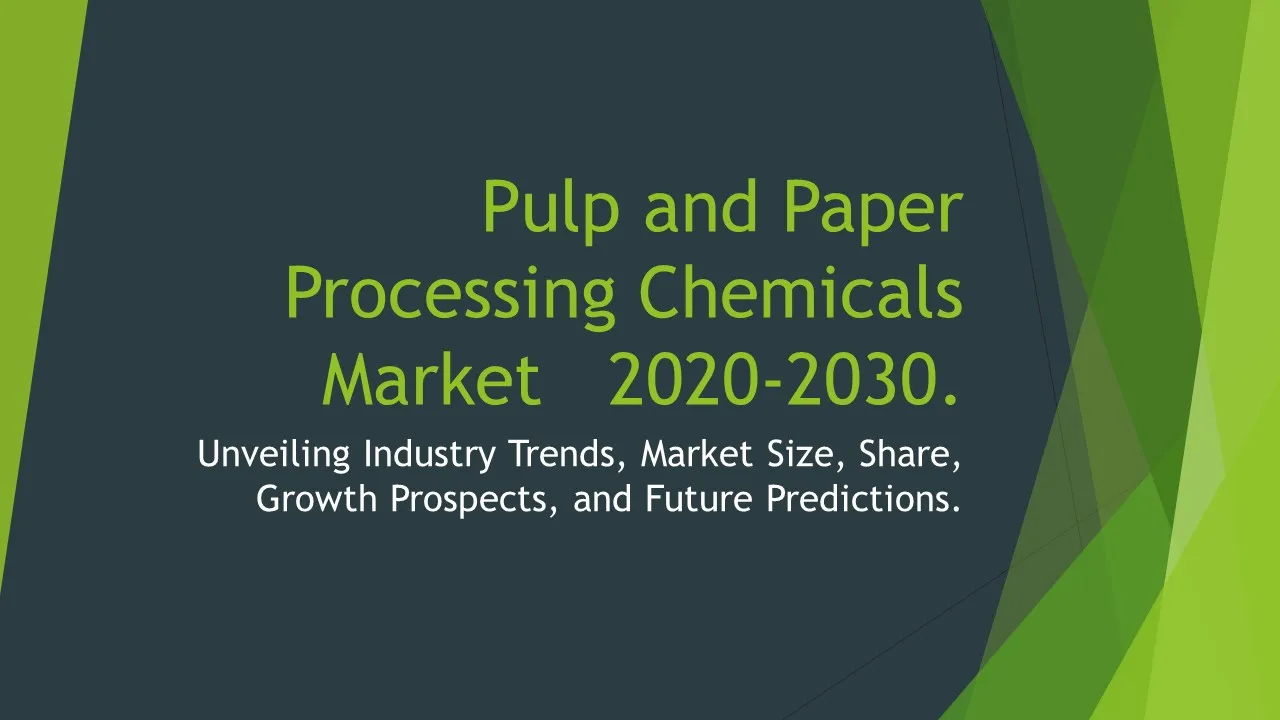Metamitron
Metamitron Market Segments - by Product Type (Liquid Formulation, Soluble Powder Formulation, Wettable Powder Formulation, Granular Formulation, Other Formulations), Application (Herbicide, Pesticide, Fungicide, Other Applications), Distribution Channel (Online Stores, Agrochemical Retailers, Direct Sales, Others), Ingredient Type (Metamitron 70% WG, Metamitron 70% WP, Metamitron 50% SC, Other Ingredient Types), and Region (North America, Europe, Asia Pacific, Latin America, Middle East & Africa) - Global Industry Analysis, Growth, Share, Size, Trends, and Forecast 2025-2035
- Report Preview
- Table Of Content
- Segments
- Methodology
Metamitron Market Outlook
The global Metamitron market is projected to reach approximately USD 1.2 billion by 2035, growing at a CAGR of around 4.8% during the forecast period from 2025 to 2035. The growth can be attributed to the increasing demand for effective herbicides and pest control solutions in the agricultural sector, driven by the need for enhanced crop yield and productivity. Additionally, the rise in the adoption of precision agriculture techniques and the growing trend of sustainable farming practices are expected to further stimulate market growth. Furthermore, the expansion of the agrochemical industry, combined with innovations in product formulations, is likely to create lucrative opportunities for industry players. The overall emphasis on food security and the need to address pest resistance through effective chemical solutions will also contribute to the ongoing market expansion.
Growth Factor of the Market
One of the primary growth factors for the Metamitron market is the increasing global population, leading to a higher demand for food production. As agricultural practices become more intensive to meet this demand, the use of herbicides like Metamitron becomes essential to manage weeds and pests effectively. Furthermore, the rise of organic farming and integrated pest management (IPM) practices is driving the need for more efficient agrochemicals that ensure sustainable crop production. Additionally, advancements in formulation technology have led to the development of more effective and environmentally friendly products, making Metamitron a preferred choice among farmers. The growing awareness of crop protection products among farmers and their efficacy has also contributed to the increasing adoption rates of Metamitron. Lastly, government initiatives promoting modern agricultural practices and providing subsidies for chemical inputs are further propelling market growth.
Key Highlights of the Market
- The global Metamitron market is expected to exhibit steady growth due to rising agricultural activities.
- Innovative product formulations are enhancing the effectiveness and appeal of Metamitron-based products.
- Growing concerns regarding pest resistance are driving the demand for advanced chemical solutions.
- North America and Europe are expected to remain the leading markets due to established agricultural practices.
- The increasing trend of precision farming is anticipated to boost the demand for Metamitron significantly.
By Product Type
Liquid Formulation:
Liquid formulations of Metamitron have gained popularity due to their ease of application and effective weed management capabilities. These formulations allow for uniform distribution and penetration into the soil, ensuring better efficacy against various types of weeds. Farmers often prefer liquid formulations because they can be easily mixed with other agrochemicals, making it a versatile choice for pest control. The liquid concentration allows for precise dosing, which is crucial for achieving desired results while minimizing environmental impact. As the trend toward environmentally responsible farming practices grows, the demand for liquid formulations that are effective and safe is anticipated to rise significantly over the coming years.
Soluble Powder Formulation:
Soluble powder formulations of Metamitron cater to farmers looking for a strong yet versatile solution to combat weeds. This formulation allows for easy solubility in water, enabling quick application without concerns about residue build-up in the environment. Its effectiveness in targeted weed control is complemented by the ability to mix with other agricultural products, enhancing its utility in integrated pest management strategies. The soluble powder formulation often demonstrates a longer shelf-life compared to other formulations, making it a practical choice for farmers who require products that maintain efficacy over time. As awareness of sustainable agricultural practices grows, the demand for these formulations is likely to witness significant growth.
Wettable Powder Formulation:
Wettable powder formulations of Metamitron are designed for effective dispersion in water, making them ideal for various agricultural applications. This formulation is often preferred by farmers for its excellent adherence to plant surfaces, allowing for superior coverage and protection against weeds. The ability to mix with other products enhances its effectiveness, contributing to its growing popularity. The wettable powder format also allows for precise application rates, which is essential for controlling weed populations without harming crop yields. As the agricultural sector continues to evolve, the demand for this formulation type is expected to rise, driven by the need for effective and reliable weed management solutions.
Granular Formulation:
Granular formulations of Metamitron are particularly favored in situations where long-lasting weed control is required. These formulations offer a slow-release mechanism, providing sustained efficacy over an extended period, which is beneficial for crops that need ongoing protection. Granular products are easy to handle and apply, making them suitable for large-scale agricultural operations. Farmers can achieve effective weed control with minimal labor input, thus enhancing productivity. The increasing focus on agricultural efficiency and yield optimization is likely to propel the demand for granular formulations in the near future, aligning with the industry’s shift toward more sustainable farming practices.
Other Formulations:
In addition to the primary formulations of Metamitron, there exists a category of other formulations that include combinations or specialized mixes designed to tackle specific agricultural challenges. These formulations may incorporate various additives that enhance the performance of Metamitron, such as surfactants or stabilizers, to improve the product's overall efficacy. The versatility of these formulations allows farmers to customize their pest management strategies according to their unique crop needs and local environmental conditions. As agricultural practices become more diverse and tailored, the demand for these specialized formulations is anticipated to grow, catering to the increasing complexity of modern farming challenges.
By Application
Herbicide:
The herbicide application of Metamitron is one of its most significant market segments, as it plays a critical role in weed management across various crops. Farmers rely on Metamitron to effectively control a wide range of annual and perennial weeds, which, if left unchecked, can significantly reduce crop yields. This application is particularly vital in the cultivation of sugar beets, as Metamitron has proven efficacy in managing troublesome weed species that compete for nutrients and water. The increasing adoption of herbicides by farmers, driven by the growing need for efficient crop management and productivity, is expected to bolster the demand for Metamitron in the herbicide segment. Furthermore, the rising awareness regarding the benefits of integrated weed management practices is anticipated to enhance the adoption of Metamitron-based herbicides in the agricultural sector.
Pesticide:
Metamitron's role as a pesticide addresses the growing concerns about pest infestations that threaten crop health and yield. Its effectiveness in controlling a variety of pests makes it an invaluable component of integrated pest management systems. The application of Metamitron as a pesticide is increasingly favored due to its targeted action, which minimizes harm to beneficial insects while effectively managing harmful pest populations. The rising incidence of pest resistance to conventional pesticides further underscores the importance of using effective chemical solutions like Metamitron. As farmers strive to protect their crops and ensure food security, the demand for Metamitron in pesticide applications is anticipated to rise significantly in the coming years.
Fungicide:
As a fungicide, Metamitron contributes to the protection of crops from fungal diseases that can devastate yields if left unmanaged. Its broad-spectrum activity against various fungal pathogens makes it a preferred choice for farmers aiming to maintain crop health and quality. The growing understanding of the economic impact of fungal diseases on agriculture has propelled the demand for effective fungicides, with Metamitron being a significant player in this segment. Additionally, the increasing trend toward sustainable agriculture practices is leading farmers to seek fungicides that not only protect their crops but are also less harmful to the environment. The anticipated growth in the fungicide segment of the Metamitron market reflects this ongoing demand for effective crop protection solutions.
Other Applications:
Besides its main applications as a herbicide, pesticide, and fungicide, Metamitron finds use in various other applications that cater to specific agricultural needs. This could include roles in seed treatment or in combinations with other agrochemicals to enhance overall efficacy. Farmers are increasingly looking for multifunctional products that can address multiple issues, such as managing both weeds and pests simultaneously. The versatility of Metamitron allows it to be effectively integrated into various pest management strategies. As the agricultural landscape continues to evolve in response to changing climatic conditions and pest pressures, the demand for Metamitron in these alternative applications is expected to grow, offering farmers additional tools for successful crop management.
By Distribution Channel
Online Stores:
The rise of e-commerce has transformed the distribution landscape for Metamitron, with online stores becoming an increasingly popular channel for farmers and agricultural professionals. This channel offers convenience and a broad product selection, allowing consumers to compare prices and product specifications easily. The growing trend of digitalization in agriculture has led to increased online purchasing, as farmers seek to streamline their procurement processes. Additionally, online platforms often provide valuable information and customer reviews, helping users make informed purchasing decisions. As the reliance on online shopping continues to expand, the market for Metamitron through this distribution channel is expected to see significant growth, catering to the evolving preferences of the agricultural community.
Agrochemical Retailers:
Agrochemical retailers have traditionally served as essential distribution channels for Metamitron, providing farmers with access to various agricultural inputs. These retailers often have established relationships with local farming communities, creating a sense of trust and reliability. The knowledgeable staff at agrochemical retail outlets can provide farmers with tailored advice and recommendations based on their specific needs and local conditions. As the agricultural sector becomes more competitive, retailers are also increasingly focusing on providing value-added services, such as soil testing and product demonstrations, to enhance customer loyalty and experience. Thus, the agrochemical retailer segment remains a critical distribution channel for Metamitron, expected to maintain its prominence in the market.
Direct Sales:
Direct sales represent a growing distribution channel for Metamitron products, offering manufacturers the opportunity to reach their customers more effectively without intermediaries. This approach allows companies to establish direct relationships with farmers, providing them with personalized support and tailored solutions. Direct sales representatives can gather valuable feedback from users, helping manufacturers improve their products and services continuously. Furthermore, this channel enables companies to engage in targeted marketing campaigns that resonate with specific customer segments. As the demand for transparency and quality assurance increases, the direct sales model is anticipated to gain traction in the Metamitron market, promoting a closer connection between producers and consumers.
Others:
Other distribution channels for Metamitron include agricultural cooperatives and specialty distributors, which play niche roles in the market. These channels often serve specific segments of the agricultural industry, focusing on unique customer needs and localized offerings. Agricultural cooperatives can provide farmers with bulk purchasing options, lower prices, and shared resources, which are particularly valuable for smallholder farmers looking to optimize their operations. Specialty distributors may offer targeted product lines and expert advice tailored to specific crop types or farming practices. As the agricultural ecosystem continues to diversify, these alternative distribution channels are expected to play an important role in broadening the reach of Metamitron products, ensuring they are accessible to a wide range of agricultural stakeholders.
By Ingredient Type
Metamitron 70% WG:
Metamitron 70% WG (water-dispersible granule) is a prominent ingredient type that showcases the effectiveness of Metamitron in agricultural applications. This formulation ensures high solubility and quick dispersion in water, making it ideal for a variety of crop protection applications. Farmers favor this ingredient type for its ability to provide a concentrated dose without requiring excessive amounts of product, thereby optimizing costs and improving application efficiency. The effectiveness of Metamitron 70% WG in controlling a range of weed species while maintaining crop safety has contributed to its popularity among agricultural professionals. As the focus on sustainable farming practices continues to grow, this formulation type is expected to see increased adoption in the market.
Metamitron 70% WP:
Metamitron 70% WP (wettable powder) serves as another significant ingredient type in the Metamitron market. This formulation is designed to easily mix with water, ensuring excellent dispersion and adherence to plant surfaces. Farmers appreciate the versatility of this ingredient type, as it can be integrated into various pest management programs for effective weed control. The ability to utilize Metamitron 70% WP in combination with other agrochemical products allows for customizable application strategies tailored to specific agricultural needs. As farmers increasingly seek effective solutions that fit within their integrated pest management practices, the demand for this ingredient type is expected to grow substantially.
Metamitron 50% SC:
Metamitron 50% SC (suspension concentrate) is designed to provide farmers with an efficient and effective way to manage weeds in their crops. This formulation offers high levels of efficacy while minimizing the risk of phytotoxicity, making it suitable for a wide range of crops. The suspension concentrate formulation allows for easy mixing, ensuring that users can achieve optimal application rates. Farmers have increasingly turned to Metamitron 50% SC as it provides quick knockdown of weed populations, leading to immediate results that help protect crop yields. The anticipated growth for this ingredient type is driven by the increasing demand for effective and safe crop protection solutions in the evolving agricultural landscape.
Other Ingredient Types:
The category of other ingredient types encompasses a variety of formulations and blends that utilize Metamitron in combination with other active ingredients. These products are designed to offer enhanced performance and address specific weed management challenges faced by farmers across different crops. By combining Metamitron with other herbicides or adjuvants, these formulations can provide synergistic effects that improve overall efficacy while reducing the likelihood of resistance development. As the agricultural industry continues to adapt and evolve in response to changing pest pressures and environmental factors, the demand for these innovative product offerings is expected to increase, positioning Metamitron as an integral component of diverse pest management strategies.
By Region
The North American region is expected to dominate the Metamitron market due to the highly developed agricultural sector and the increasing implementation of advanced farming technologies. The United States and Canada serve as key contributors to market growth, with robust demand for effective weed control solutions in staple crops such as corn and soybeans. The integration of precision agriculture techniques and a growing emphasis on sustainable farming practices are anticipated to further bolster the adoption of Metamitron in this region. With a projected CAGR of around 5.2% during the forecast period, North America is positioned as a leading market for Metamitron, reflecting the ongoing investment in agricultural innovation and crop productivity.
In Europe, the Metamitron market is also poised for significant growth, driven by the increasing awareness of the necessity for effective crop protection solutions amidst rising environmental concerns. Countries such as Germany, France, and the United Kingdom are likely to account for substantial shares of the market, as they seek to balance agricultural productivity with sustainability. European regulatory frameworks around agrochemicals continue to evolve, encouraging the adoption of innovative and environmentally responsible products like Metamitron. The region's market is projected to maintain a steady CAGR of around 4.5%, underscoring its importance as a key player in the global Metamitron landscape.
Opportunities
As the agricultural landscape evolves, numerous opportunities are emerging for the Metamitron market, particularly in the realm of sustainable agriculture. With the increasing global focus on environmentally responsible farming practices, there is a rising demand for agrochemicals that are effective yet minimize harm to the ecosystem. Metamitron, recognized for its effectiveness against various weed species and lower environmental impact compared to traditional herbicides, positions itself as an attractive option for farmers looking to enhance their crop management strategies. The incorporation of Metamitron into integrated pest management (IPM) practices is another avenue that can facilitate market growth, as farmers seek holistic solutions to address pest and weed challenges while promoting environmental stewardship.
In addition to sustainability, advancements in technology represent a significant opportunity for the Metamitron market. The implementation of precision agriculture techniques, driven by the adoption of data analytics, remote sensing, and IoT technologies, can help optimize the application of Metamitron products. Farmers are increasingly utilizing technology to make informed decisions regarding crop management, leading to improved efficiency and reduced costs. This trend toward data-driven farming practices presents an opportunity for Metamitron manufacturers to develop innovative formulations and application methods that align with the evolving needs of the agricultural sector. Collaborations between agrochemical companies and technology firms can further enhance product offerings, driving greater adoption of Metamitron in diverse agricultural practices.
Threats
Despite the promising growth prospects for the Metamitron market, several threats could impact its trajectory. One significant concern is the increasing prevalence of pest resistance to agrochemicals, including herbicides like Metamitron. As pests adapt to chemical treatments, the effectiveness of Metamitron may diminish over time, prompting farmers to seek alternative solutions. This resistance development not only poses a challenge to product efficacy but can also lead to reduced crop yields and increased costs for farmers, subsequently impacting the overall market for Metamitron. To mitigate this threat, continuous research and development efforts are essential to innovate new formulations and application strategies that counteract resistance and maintain Metamitron's effectiveness in diverse environments.
Another potential threat to the Metamitron market lies in the evolving regulatory landscape surrounding agrochemicals. Governments worldwide are placing increasing scrutiny on the safety and environmental impact of chemical products used in agriculture. Stricter regulations and potential bans on certain active ingredients can create uncertainty in the market, affecting product availability and farmer adoption rates. Additionally, public perceptions regarding the use of chemical inputs in agriculture are shifting toward more organic and natural alternatives, which may lead to decreased demand for synthetic agrochemicals like Metamitron. To navigate this challenge, manufacturers must focus on transparency, sustainability, and the development of products that align with evolving consumer preferences and regulatory requirements.
Competitor Outlook
- BASF SE
- Syngenta AG
- Corteva Agriscience
- FMC Corporation
- UPL Limited
- ADAMA Agricultural Solutions Ltd.
- Nufarm Limited
- Sumitomo Chemical Co., Ltd.
- Cheminova A/S (part of FMC Corporation)
- Isagro S.p.A.
- Inchem Group
- Koppert Biological Systems
- Hanfeng Evergreen Inc.
- Hokkaido Chemicals Co., Ltd.
- Rallis India Ltd.
The competitive landscape of the Metamitron market is characterized by the presence of several key players striving to establish a strong foothold in this growing sector. The market is highly fragmented, with numerous companies offering a diverse range of products and formulations. Key players are increasingly investing in research and development initiatives to introduce innovative formulations that cater to the evolving needs of farmers and address challenges such as pest resistance. Collaborations and partnerships with agricultural cooperatives, technology firms, and research institutions are also becoming common strategies for market players seeking to enhance their product offerings and expand their market reach.
BASF SE is one of the leading players in the Metamitron market, known for its strong commitment to sustainability and innovative agricultural solutions. The company has been actively developing new formulations that align with the principles of integrated pest management, enhancing the efficacy of Metamitron in diverse agricultural applications. Syngenta AG is another major competitor, offering a comprehensive portfolio of crop protection products, including Metamitron-based solutions, to help farmers manage pests and weeds more effectively. Corteva Agriscience, with its strong focus on research and development, is also making significant strides in the Metamitron market, aiming to deliver advanced formulations that meet the needs of modern agricultural practices.
Nufarm Limited and FMC Corporation are additional players that are noteworthy in the Metamitron landscape, offering competitive products that address the challenges of weed management in various crops. Their emphasis on innovation and sustainability aligns with the increasing demand for effective crop protection solutions that minimize environmental impact. Furthermore, UPL Limited and ADAMA Agricultural Solutions Ltd. have positioned themselves effectively in the market through strategic acquisitions and partnerships, enhancing their product portfolios and market presence. As these companies continue to focus on developing effective, safe, and sustainable agricultural solutions, the competitive landscape of the Metamitron market is expected to evolve, presenting further opportunities for growth and development.
1 Appendix
- 1.1 List of Tables
- 1.2 List of Figures
2 Introduction
- 2.1 Market Definition
- 2.2 Scope of the Report
- 2.3 Study Assumptions
- 2.4 Base Currency & Forecast Periods
3 Market Dynamics
- 3.1 Market Growth Factors
- 3.2 Economic & Global Events
- 3.3 Innovation Trends
- 3.4 Supply Chain Analysis
4 Consumer Behavior
- 4.1 Market Trends
- 4.2 Pricing Analysis
- 4.3 Buyer Insights
5 Key Player Profiles
- 5.1 BASF SE
- 5.1.1 Business Overview
- 5.1.2 Products & Services
- 5.1.3 Financials
- 5.1.4 Recent Developments
- 5.1.5 SWOT Analysis
- 5.2 Syngenta AG
- 5.2.1 Business Overview
- 5.2.2 Products & Services
- 5.2.3 Financials
- 5.2.4 Recent Developments
- 5.2.5 SWOT Analysis
- 5.3 UPL Limited
- 5.3.1 Business Overview
- 5.3.2 Products & Services
- 5.3.3 Financials
- 5.3.4 Recent Developments
- 5.3.5 SWOT Analysis
- 5.4 Inchem Group
- 5.4.1 Business Overview
- 5.4.2 Products & Services
- 5.4.3 Financials
- 5.4.4 Recent Developments
- 5.4.5 SWOT Analysis
- 5.5 Isagro S.p.A.
- 5.5.1 Business Overview
- 5.5.2 Products & Services
- 5.5.3 Financials
- 5.5.4 Recent Developments
- 5.5.5 SWOT Analysis
- 5.6 Nufarm Limited
- 5.6.1 Business Overview
- 5.6.2 Products & Services
- 5.6.3 Financials
- 5.6.4 Recent Developments
- 5.6.5 SWOT Analysis
- 5.7 FMC Corporation
- 5.7.1 Business Overview
- 5.7.2 Products & Services
- 5.7.3 Financials
- 5.7.4 Recent Developments
- 5.7.5 SWOT Analysis
- 5.8 Rallis India Ltd.
- 5.8.1 Business Overview
- 5.8.2 Products & Services
- 5.8.3 Financials
- 5.8.4 Recent Developments
- 5.8.5 SWOT Analysis
- 5.9 Corteva Agriscience
- 5.9.1 Business Overview
- 5.9.2 Products & Services
- 5.9.3 Financials
- 5.9.4 Recent Developments
- 5.9.5 SWOT Analysis
- 5.10 Hanfeng Evergreen Inc.
- 5.10.1 Business Overview
- 5.10.2 Products & Services
- 5.10.3 Financials
- 5.10.4 Recent Developments
- 5.10.5 SWOT Analysis
- 5.11 Koppert Biological Systems
- 5.11.1 Business Overview
- 5.11.2 Products & Services
- 5.11.3 Financials
- 5.11.4 Recent Developments
- 5.11.5 SWOT Analysis
- 5.12 Sumitomo Chemical Co., Ltd.
- 5.12.1 Business Overview
- 5.12.2 Products & Services
- 5.12.3 Financials
- 5.12.4 Recent Developments
- 5.12.5 SWOT Analysis
- 5.13 Hokkaido Chemicals Co., Ltd.
- 5.13.1 Business Overview
- 5.13.2 Products & Services
- 5.13.3 Financials
- 5.13.4 Recent Developments
- 5.13.5 SWOT Analysis
- 5.14 ADAMA Agricultural Solutions Ltd.
- 5.14.1 Business Overview
- 5.14.2 Products & Services
- 5.14.3 Financials
- 5.14.4 Recent Developments
- 5.14.5 SWOT Analysis
- 5.15 Cheminova A/S (part of FMC Corporation)
- 5.15.1 Business Overview
- 5.15.2 Products & Services
- 5.15.3 Financials
- 5.15.4 Recent Developments
- 5.15.5 SWOT Analysis
- 5.1 BASF SE
6 Market Segmentation
- 6.1 Metamitron Market, By Application
- 6.1.1 Herbicide
- 6.1.2 Pesticide
- 6.1.3 Fungicide
- 6.1.4 Other Applications
- 6.2 Metamitron Market, By Product Type
- 6.2.1 Liquid Formulation
- 6.2.2 Soluble Powder Formulation
- 6.2.3 Wettable Powder Formulation
- 6.2.4 Granular Formulation
- 6.2.5 Other Formulations
- 6.3 Metamitron Market, By Ingredient Type
- 6.3.1 Metamitron 70% WG
- 6.3.2 Metamitron 70% WP
- 6.3.3 Metamitron 50% SC
- 6.3.4 Other Ingredient Types
- 6.4 Metamitron Market, By Distribution Channel
- 6.4.1 Online Stores
- 6.4.2 Agrochemical Retailers
- 6.4.3 Direct Sales
- 6.4.4 Others
- 6.1 Metamitron Market, By Application
7 Competitive Analysis
- 7.1 Key Player Comparison
- 7.2 Market Share Analysis
- 7.3 Investment Trends
- 7.4 SWOT Analysis
8 Research Methodology
- 8.1 Analysis Design
- 8.2 Research Phases
- 8.3 Study Timeline
9 Future Market Outlook
- 9.1 Growth Forecast
- 9.2 Market Evolution
10 Geographical Overview
- 10.1 Europe - Market Analysis
- 10.1.1 By Country
- 10.1.1.1 UK
- 10.1.1.2 France
- 10.1.1.3 Germany
- 10.1.1.4 Spain
- 10.1.1.5 Italy
- 10.1.1 By Country
- 10.2 Metamitron Market by Region
- 10.3 Asia Pacific - Market Analysis
- 10.3.1 By Country
- 10.3.1.1 India
- 10.3.1.2 China
- 10.3.1.3 Japan
- 10.3.1.4 South Korea
- 10.3.1 By Country
- 10.4 Latin America - Market Analysis
- 10.4.1 By Country
- 10.4.1.1 Brazil
- 10.4.1.2 Argentina
- 10.4.1.3 Mexico
- 10.4.1 By Country
- 10.5 North America - Market Analysis
- 10.5.1 By Country
- 10.5.1.1 USA
- 10.5.1.2 Canada
- 10.5.1 By Country
- 10.6 Middle East & Africa - Market Analysis
- 10.6.1 By Country
- 10.6.1.1 Middle East
- 10.6.1.2 Africa
- 10.6.1 By Country
- 10.1 Europe - Market Analysis
11 Global Economic Factors
- 11.1 Inflation Impact
- 11.2 Trade Policies
12 Technology & Innovation
- 12.1 Emerging Technologies
- 12.2 AI & Digital Trends
- 12.3 Patent Research
13 Investment & Market Growth
- 13.1 Funding Trends
- 13.2 Future Market Projections
14 Market Overview & Key Insights
- 14.1 Executive Summary
- 14.2 Key Trends
- 14.3 Market Challenges
- 14.4 Regulatory Landscape
Segments Analyzed in the Report
The global Metamitron market is categorized based on
By Product Type
- Liquid Formulation
- Soluble Powder Formulation
- Wettable Powder Formulation
- Granular Formulation
- Other Formulations
By Application
- Herbicide
- Pesticide
- Fungicide
- Other Applications
By Distribution Channel
- Online Stores
- Agrochemical Retailers
- Direct Sales
- Others
By Ingredient Type
- Metamitron 70% WG
- Metamitron 70% WP
- Metamitron 50% SC
- Other Ingredient Types
By Region
- North America
- Europe
- Asia Pacific
- Latin America
- Middle East & Africa
Key Players
- BASF SE
- Syngenta AG
- Corteva Agriscience
- FMC Corporation
- UPL Limited
- ADAMA Agricultural Solutions Ltd.
- Nufarm Limited
- Sumitomo Chemical Co., Ltd.
- Cheminova A/S (part of FMC Corporation)
- Isagro S.p.A.
- Inchem Group
- Koppert Biological Systems
- Hanfeng Evergreen Inc.
- Hokkaido Chemicals Co., Ltd.
- Rallis India Ltd.
- Publish Date : Jan 20 ,2025
- Report ID : CH-8304
- No. Of Pages : 100
- Format : |
- Ratings : 4.5 (110 Reviews)









